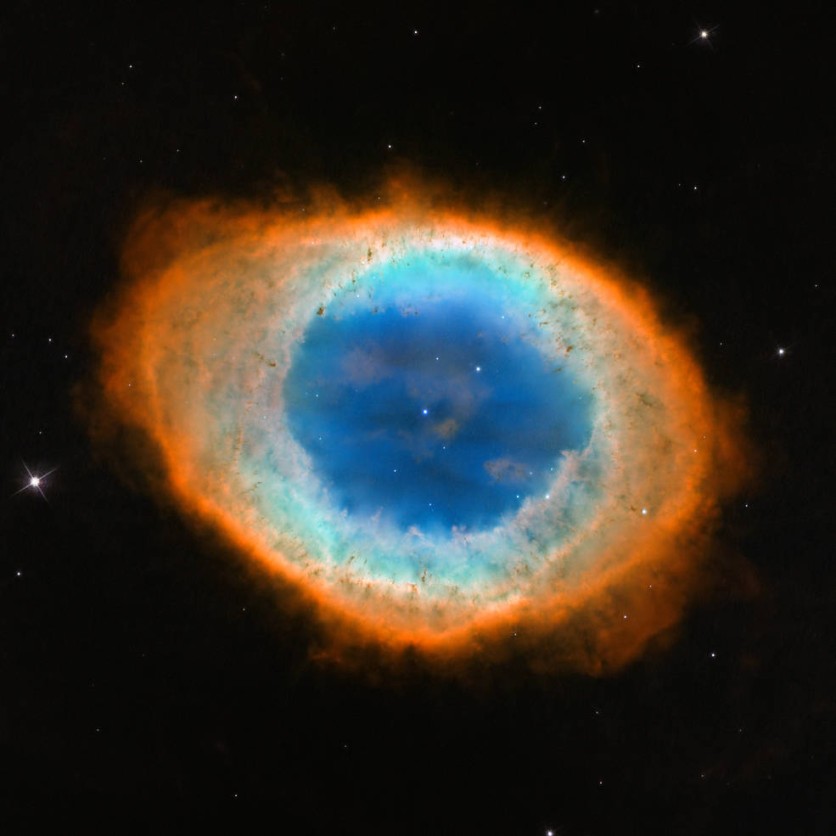NASA's Hubble Space Telescope has captured stunning images of the Ring Nebula, also known as M57, which is a planetary nebula formed by the glowing remains of a sun-like star.
The nebula is located about 2,000 light-years away in the constellation Lyra and can be observed with moderately sized telescopes during August.
This fascinating celestial object was first discovered by French astronomer Antoine Darquier de Pellepoix in 1779 and has an apparent magnitude of 8.8.

Ring Nebula's Complex Image
In a high-resolution image captured by Hubble, astronomers have discovered that the Ring Nebula's shape is more complex than initially thought. The blue gas at the center of the nebula is actually a football-shaped structure seen end-on that pierces through the red, doughnut-shaped material.
The inner rim of the ring displays an intricate structure of dark, irregular knots of dense gas that the stellar winds have not yet been able to blow away. These knots and their tails look like spokes in a bicycle.
This Hubble image has also been colored to reflect the nebula's chemical composition. The deep blue color in the center is helium, the light blue color of the inner ring is hydrogen and oxygen, and the reddish color of the outer ring is nitrogen and sulfur.
Read Also : NASA Hubble Discovers Saturn's Ring System Heats Planet's Atmosphere-A Never-Before-Seen Phenomenon!
Ring Nebula's Central Region
According to the team of astronomers led by Bruce Balick and Vincent Icke, the Ring Nebula's central region contains gaseous material that had been detected in previous observations by several telescopes.
However, the view by Hubble's Wide Field Camera 3 shows the nebula's structure in greater detail. The team suggests that the ring wraps around a blue, football-shaped structure, with each end of the structure protruding out of opposite sides of the ring.
Radiation that causes helium to shine is produced by the white dwarf star, a tiny white dot in the nebula's core. It is the stellar remnant of a star similar to the sun that has run out of hydrogen fuel and shed its outer layers of gas, causing it to gravitationally collapse into a small, dense object.
It is anticipated that the Ring Nebula will keep growing for another 10,000 years before starting to fade away and eventually blending into the interstellar medium, according to NASA.
Even though the sun is less massive than the Ring Nebula's progenitor star and will not have an extravagant ending, understanding what happens to the Ring Nebula will help us understand what will happen to the sun.
Understanding the process of planetary nebula formation and the fate of the Ring Nebula will give astronomers a glimpse into the future of our own solar system.
Related Article : NASA Hubble Telescope Captures Space Cluster Containing Stars Millions of Years Old; Here's Why NGC 2660 Is Intriguing

ⓒ 2025 TECHTIMES.com All rights reserved. Do not reproduce without permission.




